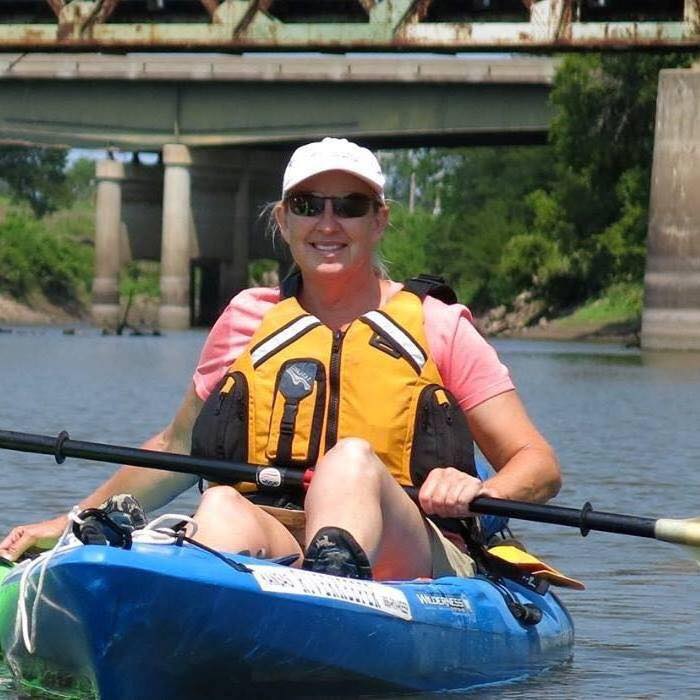 The goal of the KAW Program is to develop an understanding of water quality, watersheds and stormwater runoff and their relationship to each other. The six individual lessons align with the Kansas Next Generation Science Standards. The curriculum targets students in grades 6-12 and involves a Project Based Learning approach. The engaging lessons are taught by Friends of the Kaw staff and all supplies and equipment are provided. The program is supported by both national and local environmental education grants and contracts.
The goal of the KAW Program is to develop an understanding of water quality, watersheds and stormwater runoff and their relationship to each other. The six individual lessons align with the Kansas Next Generation Science Standards. The curriculum targets students in grades 6-12 and involves a Project Based Learning approach. The engaging lessons are taught by Friends of the Kaw staff and all supplies and equipment are provided. The program is supported by both national and local environmental education grants and contracts.
Lesson 1- Introduction to Watersheds: During this lesson students learn about how much usable water exists on the planet and how important it is to protect this natural resource. Students will learn about the Kansas River Watershed as well as their own local watersheds and the role each plays in providing water for all who depend upon it.
Lessons 2 –Stormwater Runoff: Students will gain an understanding of what a watershed is by observing the slope of the school grounds and how water drains on and off the property. They will learn the differences between pervious and impervious surfaces and the impacts each has on stormwater runoff. Using a water frame they will calculate the approximate amount of runoff that could accumulate after 1” of rainfall on their school campus.
Lesson 3-Pre-Field Investigation: This lesson can be taught prior to the Field Investigation to provide students with knowledge of the water quality tests they will be performing at a nearby water site. It can also serve as a follow-up after their Field Investigation to share knowledge pertaining to the tests performed and the value of each on our environment. Students work in teams to research air and water temperature, pH, conductivity, turbidity, nitrates and phosphates, dissolved oxygen and macroinvertebrates.
Lesson 4 Field Investigation: Students will use HACH kits to conduct water quality tests at a nearby water site. This could be a river, lake, creek, stream or pond. Students work in small teams where they will rotate through four stations conducting water quality tests and collecting data. The stations will involve chemical and non-chemical tests as well as identifying macroinvertebrates and the value of each on the environment. Click on the links provided for additional information pertaining to the individual tests performed: non-chemical tests (air and water temperature, turbidity, conductivity and pH); chemical tests (phosphates, nitrates, coliform bacteria); dissolved oxygen; and seining and identifying macro invertebrates.
Lesson 5- Data Analysis: Data collected from each of the water quality tests conducted during the Field Investigation lesson will be analyzed to determine the overall condition of that particular water site. Sources of possible pollutants are discussed as well as the connections between runoff volumes and stream flow and their impact. Best Management Practices are shared and encouraged to help improve the water quality in our watersheds.
Lesson 6- Project Based Learning/Action Plan: Teachers and students select a BMP or other environmental project to implement during the school year. This project can be related, (but not limited), to improving the water quality at the particular water site where they obtained their test results. When possible, support will be provided by Friends of the Kaw staff to work with the schools in the implementation of these projects.
The following information is for specific classrooms.
KAWS Virtual Classroom (link below):
Teacher, Student & Volunteer Materials (password required)
Note to Teachers: These materials were created with you and your students in mind. They are not to be shared with other educators or individuals without permission granted by Friends of the Kaw. Thank-you for your cooperation.

 Paddle safely! Use the links below to quickly access information that impacts river conditions.
Paddle safely! Use the links below to quickly access information that impacts river conditions.
